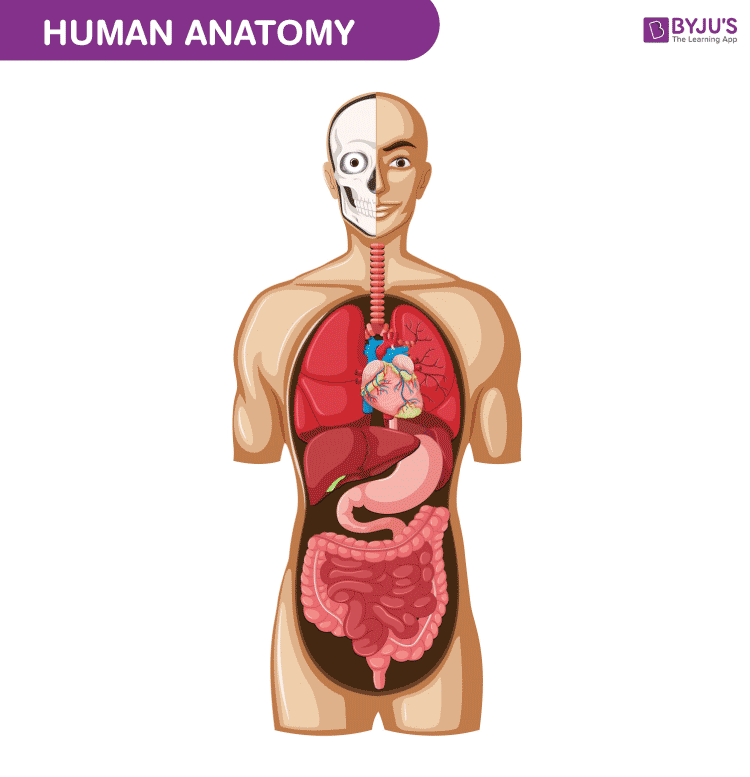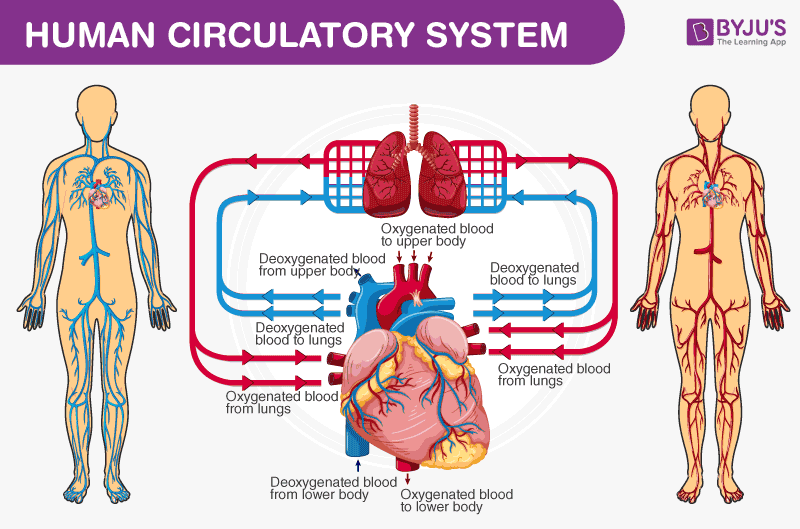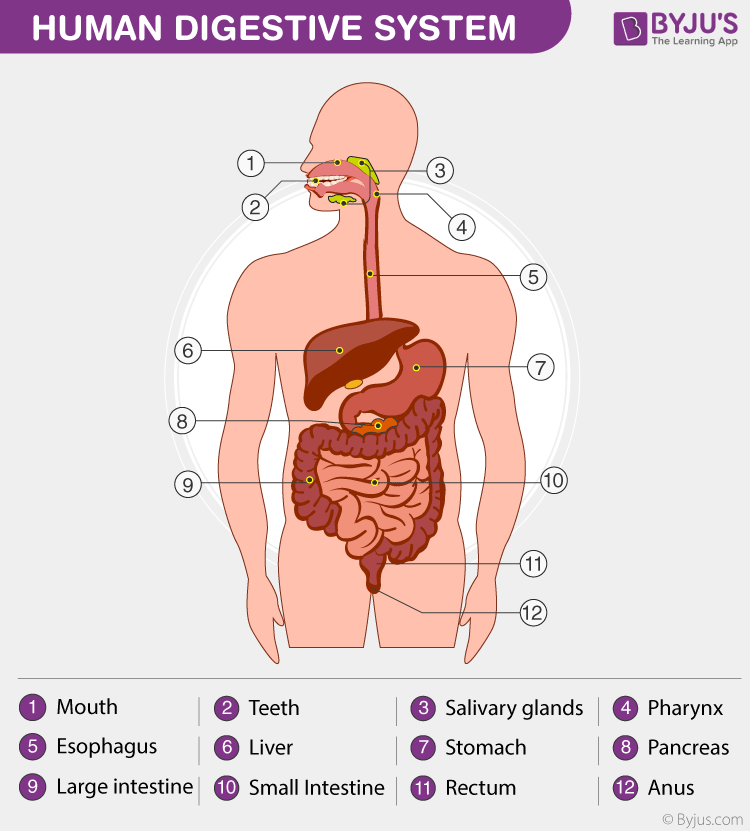Review Sheet Exercise 13 Gross Anatomy of the Muscular System
Almost Human Body
If we were to "suspension apart" the human body at the microscopic level, so the cell would found its nearly basic unit of measurement.
The average adult has somewhere between xxx – 40 trillion cells, and an estimated 242 billion new cells are produced every solar day. When a select grouping of cells with like functions come together, it forms a tissue.
Tissues cumulate into organs, group of organs form organ systems and eventually, a complete organism.
Cells -> Tissues -> Organs -> Organ System -> Organism
- Man Anatomy
- Human being Physiology
- Circulatory System
- Digestive System
- Reproductive System
- Respiratory Arrangement
- Nervous Organisation
- Central Points About the Human Trunk
Human being Beefcake
Skeleton
The homo torso exhibits a variety of movements from walking and running to crawling, jumping and climbing. The framework that enables us to do all these activities is the skeleton. Humans accept as much every bit 300 bones at nativity. However, the bones start to fuse with age. At adulthood, the total number of basic is reduced to 206.

Homo Anatomy is the scientific study of form and shapes of man beings
The skeleton besides protects several vital organs such as the heart, lungs and the liver. Bones are attached to other basic through ligaments, a gristly connective tissue.
Joints are the points at which two or more basic meet. They enable a range of movements like rotation, abduction, adduction, protraction, retraction and more. Based on flexibility and mobility, joints tin can exist farther classified into movable joints and immovable joints. Movable joints are flexible while immovable joints (also chosen fixed joints) are non-flexible since the bones are fused.
Muscles
Muscles are specialised tissues which assist the basic in locomotion. Muscles are attached to the bones through tendons. Motility of limbs happens due to the contraction and relaxation of the corresponding muscles present in that region. Joints help in the flexibility of basic, but a os cannot exist bent or stretched until a muscle acts on information technology. In other words, the muscles attached to that bone pulls it to the direction of movement.
Furthermore, most movement involves muscles that work as a pair. For example, when we bend our arm, muscles in that region contract, get shorter and stiffer and pull the bones to the direction of motion. For relaxation (stretching), muscles in the opposite direction have to pull the bones towards it.
Likewise Read: What is Liver
List of Human Body Parts
- Human body parts comprise a caput, neck and four limbs that are connected to a torso.
- Giving the body its shape is the skeleton, which is composed of cartilage and bone.
- Human body internal parts such as the lungs, heart, and brain, are enclosed inside the skeletal system and are housed within the unlike internal trunk cavities.
- The spinal cord connects the brain with the rest of the trunk.
Human being Trunk Construction
There are different cavities in the human body that house various organ systems.
- The cranial cavity is the infinite within the skull, it protects the encephalon and other parts of the central nervous system.
- The lungs are protected in the pleural cavity.
- The abdominal cavity houses the intestines, liver and spleen.
Humans have evolved separately from other animals, merely since we share a distant common antecedent, we mostly have a body plan that is similar to other organisms, with just the muscles and basic in dissimilar proportions.
For instance, we might presume giraffes have more vertebrae in its cervix than humans. No, despite existence incredibly tall, giraffes have the same number of vertebrae, i.e. they likewise take seven vertebrae in their neck.
Ane of the nigh prominent feature features is the power to utilize our hands, especially for tasks that require dexterity, such as writing, opening a bottle of water, opening a doorknob, etc.
This is the result of humans having ancestors that began walking on their hind limbs rather than using all four limbs. About of our anatomical insight was gained through the dissection of corpses (cadavers), and for a long fourth dimension, information technology was the only fashion nosotros could gain anatomical knowledge about the homo torso. It was a rather grotesque affair, but information technology made up the bulk of medical literature for centuries. These days, technological innovation has made information technology possible to explore homo beefcake at a microscopic level.
Even to this day, scientists are newly discovering organs that were previously overlooked or take been mistakenly identified as other existing tissues. In 2018, scientists had discovered a new, body-wide organ chosen the Interstitium that exists correct under the skin.
Human Physiology
Information technology is referred to the physical, mechanical, and biochemical function of humans. This connects health, medicine, and science in a mode that studies how the human body acquaints itself to physical activity, stress, and diseases.
The person who is trained to study man physiology is called a physiologist. Claude Bernard is referred to as the father of Physiology for his exemplary research.
Read More: Physiology
Human Body Parts and their Functions
The list of human torso parts vary as the standard definition of an organ is yet up for debate. All the same, there are an estimated 79 organs identified to engagement. We also possess organs that have "lost" their function throughout our development. Such organs are called vestigial organs.
Some of these organs piece of work together and class systems that are specialised to perform a specific office or a fix of functions. Collectively, these are known equally organ systems.
And out of these 79 organs, 5 are crucial for survival, and whatever damage to these v organs might issue in termination of life. These five crucial homo body parts are the brain, heart, liver, lungs and kidneys. Read on to explore more about these body parts and their functions in detail:
Circulatory System
The circulatory system is also referred to equally the cardiovascular organization. It comprises the heart and all the blood vessels: arteries, capillaries, and veins. At that place are essentially 2 components of apportionment, namely:
- Systemic circulation
- Pulmonary circulation

Diagram showing pulmonary (blue) and systemic circulation (red)
Also these two, at that place is a third blazon of circulation chosen Coronary circulation. Because blood is the torso'south connective tissue, it helps to ship essential nutrients and minerals to the cells and waste byproducts away from it.
Hence, it is besides known as the body'southward "transport organisation." Anatomically, the human heart is similar to other vertebrate hearts in the brute kingdom and hence, is a homologous organ.
Too Read: Double Circulation
Digestive System

A diagram of the human digestive system detailing various components
The digestive arrangement breaks down food and assimilates nutrients into the body, which the trunk then uses for growth and jail cell repair.
The major components of the digestive system are:
- Mouth
- Teeth
- Tongue
- Oesophagus
- Stomach
- Liver
- Pancreas
- Gastrointestinal tract
- Small and large intestines
- Rectum
The procedure of digestion starts with mastication (chewing food). Then, the saliva mixes with nutrient and forms a bolus, a minor rounded mass that can be hands swallowed. Once swallowed, the food travels down the oesophagus and into the breadbasket. The tummy secretes strong acids and powerful enzymes that break the nutrient downwards into a paste.
It then moves into the modest intestine where the food is broken down even more than because of the bile secreted past the liver and powerful, digestive enzymes from the pancreas. This is the stage at which nutrients are captivated from the food.
The leftover materials (stool) then movement on to the large intestine where information technology transforms from liquid to solid, as water is removed. Finally, information technology gets pushed into the rectum, ready to be eliminated from the body.
Explore: The Structure and Role of the Alimentary Culvert
Reproductive Arrangement
The human reproductive system is likewise known as the genital system that comprises internal and external organs that help in reproduction. It varies for both males and females. Hormones, fluids, and pheromones are all connective accessories for the reproductive organs to function.
Female Reproductive System
The female reproductive system consists of the following:
- Ovaries: Produces ovum – female egg as well as the hormone estrogen.
- Uterine tubes: Oviducts or fallopian tubes are the other names given for uterus tubes.
Also known equally the womb, the uterus is a pear-shaped organ where the fetus grows. The neck is the route to the vagina and gateway for sperm to enter. Vagina acts as the route for a penis to enter during intercourse and the exit of the fetus during delivery.

Male Reproductive System
The male person reproductive system consists of testicles, which act equally a storehouse for sperms. These oval-shaped organs, are encased in a pouch that is chosen scrotum.

Next to the testis is the vas deferens that are the accessory ducts for the male person sexual system. When sperm is formed, it is mixed with fluids that are produced by seminal glands, prostate gland, and Cowper'due south gland. The master purpose of Cowper gland is to hike the semen volume and lubrication during coitus.
More to Explore: Reproductive System
Respiratory Organization
The respiratory process involves the intake of oxygen, and the exhale of carbon dioxide from the trunk. This organization is also known equally the ventilatory organization, gas exchange organisation or respiratory apparatus. Vertebrates similar human being beings possess lungs for respiration. The process of respiration starts with the cycle of inhalation and exhalation.
Inhalation results in the oxygen entering into the torso and exhalation results in carbon dioxide exiting from the trunk. Anatomically, the respiratory system comprises the following organs:
- Trachea
- Bronchi
- Bronchioles
- Lungs
- Diaphragm

A diagram of the human respiratory system highlighting the gas exchange process
By diffusion, molecules of carbon dioxide and oxygen are exchanged passively among the blood cells and external environs. This bandy is done through alveoli (which are the air sacs) in the lungs.
More than Virtually: Respiratory System
Nervous Organisation
The voluntary and involuntary actions are maintained and taken care of by the central nervous organization. It helps to aqueduct the signals to and from dissimilar parts of our trunk. Nervous System is broadly classified into two categories:
- Central Nervous Organisation
- Peripheral Nervous System

Distribution of Nerves in humans (superlative) and the Neuron (bottom)
The central nervous system contains the encephalon and the spinal cord, while the peripheral nervous arrangement includes nerves and ganglia that are nowadays outside the brain and spinal string. Through the axons, every part of the body gets connected.
Central Nervous System consists of:
- Forebrain: It comprises the cerebrum, hypothalamus, and thalamus. The largest part of the encephalon is the cerebrum. Thinking, perceiving, decision-making motor part, receiving and processing information and understanding linguistic communication are the main functions done by this section of the encephalon. Also, sexual development and emotion functions are attached to the fore-encephalon.
- Midbrain: It is situated between the hypothalamus and thalamus. The brain stem is associated with the midbrain. Auditory and visual responses are controlled by the mid-brain.
- Hindbrain: The medulla, pons, and cerebellum are together, tied in the hind-encephalon. Interconnections of different parts of the brain's surface that helps to conform neurons and connect them to the spinal column are done past the Hind brain.
Peripheral Nervous System consists of:
- Somatic nervous system: The organisation's primary purpose is to transmit the motor and sensory impulses from CNS and back. Information technology is linked to all the sensory organs, limbs and skeletal system. Imagine a scenario where yous are riding a bicycle, and suddenly, you spot an obstacle (say a dog) on the road. Your ability to immediately swerve out of the obstruction's path and avert the crash is the result of the somatic nervous arrangement taking action.
- Autonomic Nervous System: This system works without the person's attempt. The system helps to relay impulse from the central nervous system to smooth muscles and involuntary organs such equally your centre, lungs etc. Also, it prepares the body confronting any trigger-happy attacks or abnormal conditions such as high body temperature during a fever or high rate of animate and blood pressure after a strenuous practise.
Farther Reading: Nervous Arrangement
Primal Points Well-nigh the Human Trunk
Every human existence, tissues, human body parts and the organ systems are fabricated up of cells- the fundamental unit of life. Anatomy is the science of understanding the construction and the parts of living organisms. Physiology, on the other hand, deals with the internal mechanisms and the processes that work towards sustaining life.
These can include biochemical and physical interactions between various factors and components in our trunk. With the progress of evolution, organisms began to exhibit advanced characteristics and features that enabled them to be more efficient and thrive in their respective environs.
The human construction can exist described as bipedal, with pilus covering the body, presence of mammary glands and a set of extremely well-developed sense organs. With respect to human being body anatomy, we have a specialized circulatory organization that enables the efficient transport of materials and nutrients within the body.
The presence of a well-adult digestive system helps to extract essential nutrients and minerals required by the torso. A well developed respiratory system ensures the efficient gas exchange and the nervous organisation enables coordination and interaction inside the body and also the external environment, thereby ensuring survival.
Frequently Asked Questions on Human Anatomy And Physiology
What practice y'all mean by human anatomy?
Anatomy is the written report of the structure of an object. Human being anatomy deals with the way the parts of humans interact to form a functional unit.
What do yous understand by human being physiology?
Homo Physiology deals with the mechanical, biochemical and concrete functions of humans. It serves as the foundation of modern medicine. It is the study of the operation of human organs.
Who is the father of human physiology?
Claude Bernard is the father of human Physiology. He is likewise referred to as the male parent of modern experimental Physiology.
What is the importance of human physiology?
Human physiology lays the foundation upon which our noesis of life is congenital. It helps united states of america to know how to treat diseases and how to manage stress laid upon usa by dissimilar environments.
Who is the father of human being beefcake?
Andreas Vesalius is known as the male parent of human beefcake. He was Belgian born in the family of physicians. His about famous work, Fabrica of Andreas Vesalius won great recognition.
What are the unlike types of anatomy?
There are two different types of anatomy- gross anatomy and microscopic anatomy. Gross anatomy deals with things that can exist seen with the naked optics, whereas microscopic anatomy deals with the things that can only exist viewed under a microscope.
How is human anatomy relevant?
Human anatomy helps united states to sympathize the construction and relationship of all parts of the torso. It likewise helps u.s. to know the characteristics of dissimilar torso parts.
How are beefcake and physiology dissimilar from each other?
Anatomy helps us to know about the structure of the different body parts while physiology studies the functions and relationships of torso parts.
What are the of import organs of the human torso?
The of import organs of the body include- brain, lungs, heart, kidney, liver, breadbasket, intestines, float.
What are the different systems of our body?
The unlike systems of our body include- cardiovascular organization, endocrine system, digestive organization, respiratory arrangement, excretory organization, lymphatic system, nervous arrangement, muscular system, and skeletal organisation.
For more than information about man torso, man trunk parts, or any other related topic, please visit BYJU'S Biology.
Source: https://byjus.com/biology/human-body-anatomy/
0 Response to "Review Sheet Exercise 13 Gross Anatomy of the Muscular System"
Post a Comment